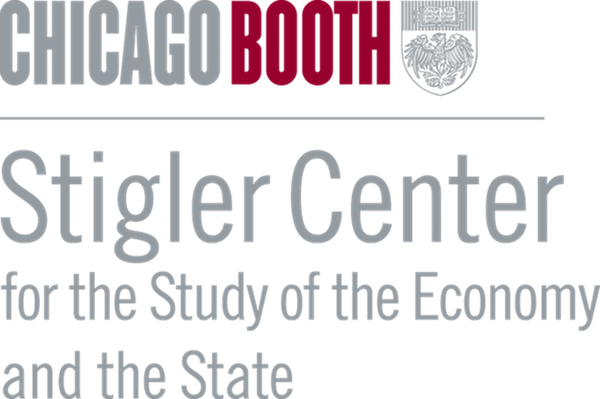Dennis Carlton provides his round-one comments on the draft Merger Guidelines.
To read more from the ProMarket Merger Guidelines Symposium, please see here.
The draft Merger Guidelines are a radical departure from previous Guidelines. Previous Guidelines, many of which I have been involved with, sought primarily to explain how certain economic concepts, reflecting the state of economic research, apply to an analysis of competition issues. In contrast, the draft Guidelines focus less on economics and read more as a legal brief, written in an apparent attempt to convince readers, perhaps judges, that many old cases, often decided prior to 1970, justify the dramatically more aggressive antitrust posture of the current enforcement Agencies (the Department of Justice and Federal Trade Commission). Worse yet, the draft Guidelines fail to mention that more contemporary court decisions, including several in cases filed recently by the Agencies, have rejected this more aggressive antitrust posture. As such, the draft Guidelines inject into antitrust enforcement a political partisanship that I suspect will undercut the bipartisan respect that prior Guidelines have earned from both courts and practitioners. The draft Guidelines would be improved, and their historical nonpartisan nature preserved, if the final draft deleted the introductory legal discussion, as well as the draft Guidelines copious citations to cases in the remainder of the document. Those can be saved for a separate policy paper. The extensive legal citations, in conjunction with the relegation of much of the economic analysis to an appendix, creates the impression that the use of economics at the Agencies has been demoted. The Agencies should state clearly whether that is their intention. I hope not.
One deficiency of the draft Guidelines, in contrast to prior ones, is the failure to state clearly what is their overriding goal. They mention “competition” a lot but fail to say why competition is good or whether it is rivalry per se that they wish to protect, rather than the benefits that competition—in some cases furthered by merger—generate. They never quite say—perhaps I missed it—that competition is good because consumers and suppliers, including workers, (i.e., society) benefit from it, even though I suspect they would be willing to endorse that idea. By not doing so, they risk falling into the fatal antitrust trap of confusing the protection of rivals with the protection of competition. Because the draft Guidelines are not explicit in stating their goal, I urge the Agencies to clarify whether they have abandoned their public pronouncements that they will discard the “consumer welfare standard” (which includes the supply side) and broaden their goals to include other issues such as “ fairness,” income equality, employment, and perhaps more. It is not that these other goals are not worthy, but as I have written elsewhere:
A policy that considers everything in its decision making is a policy doomed to fail and one that is likely to turn antitrust policy into a political weapon to be wielded against disfavored firms or individuals, untethered from any well- defined principle, or to lead to court decisions that depend on the idiosyncratic preferences or political leanings of the judges and juries.
To its credit, the draft Guidelines contain a succinct summary of 13 individual Guidelines. I do disagree strongly with some of them, as I explain below, though the draft Guidelines also contain some suggestions that are a welcome contribution.
Let me now elaborate a bit on these themes. Because of space constraints, I focus on major points.
Opening Legal Brief
In the Merger Guidelines of 2010, the number of citations to legal cases is zero. In contrast, in just the first four pages of the draft Guidelines, the number of footnotes citing cases to buttress some statement about appropriate antitrust principles exceeds fifteen, with the vast majority citing cases from before 1974. One would hope that judges would pay attention to current economic thinking in reaching their decisions. It is a credit to judges who do so. That strikes me as the right way a competition law should be interpreted by courts. Use current knowledge to interpret new situations or to apply new thinking to old facts. But if you look, for example, at one of the draft Guidelines’ frequently cited cases, Philadelphia National Bank, you will see that the decision cites George Stigler’s research from 1955 referring to his then-held view that a firm with a market share of only 20% should not be permitted to engage in merger. Why in the world do we think that a case influenced by economic research from 1955 should be held up as the justification for antitrust policies today? In 1955, Stigler had not yet published some of his most influential papers, including the one on oligopoly where he describes how difficult it can be for even oligopolists to raise prices above competitive levels. Does anyone think that Stigler continued to hold those 1955 views after, say, 1975 (the year I first met him) or even earlier? And if not, shouldn’t decisions today be based on current thinking and be used to critique old decisions based on economic thinking that economic research has demonstrated to be flawed? (Stigler used to joke that he wanted his coffin to have spinners installed so that when his research was misused, he could easily spin in his grave. I can feel the wind from him spinning.)
In reading the introductory section, I was particularly troubled by the fact that the draft Guidelines add emphasis to (italicize) the word “may” when explaining that the Clayton Act forbids mergers that “…may substantially lessen competition…” I fear that the draft Guidelines are suggesting that any transaction can be stopped as long as there is even a remote possibility that competition can be harmed. How remote? Isn’t the development of the case law relevant to deciding how to interpret such words? And if the draft Guidelines are suggesting, as I believe they are, that they disagree with the interpretation that has evolved, what exactly are they suggesting? I understand that this is a hard question and that at least some of the individual Guidelines are designed to give guidance as to what the Agencies might do, but many do not.
Specific Guidelines
Guideline 1 describes a structural presumption based on HHI thresholds and, separately, market shares to identify which mergers will trigger concern. By starting with a structural presumption, the draft Guidelines emphasize the importance of market definition and formulaic decision making. This approach deviates from the approach in the 2010 Guidelines that says let’s first look at hard evidence on past mergers or natural experiments where we can see what happens when the number of firms varies. I have long noted the crudeness of market definition and the lack of empirical foundation for numerical HHI thresholds in various Guidelines, but have viewed such tools as crude places to start—not end—an analysis. I do think such tools can serve a useful purpose in guiding judges. But the shift of emphasis in these draft Guidelines away from hard evidence to at best crude evidence and formulaic decision making is troublesome. Is this shift intentional?
As for the tightening of the thresholds, well, I understand that many claim that mergers have led to price increases that could have been avoided (what about the price decreases that would not occur if merger activity broadly is scared off?) and, though I disagree that the evidence supports many of the claims, I can live with this tightening of the thresholds as long as it is viewed only as being a crude initial screen that then triggers a serious examination of evidence.
Guideline 1 also adds to the historical use of HHI thresholds a new one, under which firms with a 30% share trigger a violation of a structural presumption even if they merge with another firm whose share is as low as 2%. Is there any evidence for this presumption? Won’t this scare away lots of mergers that benefit the economy? One can debate how justified these formulaic rules are, but what troubles me most is the possibility of a de-emphasis of the use of hard evidence.
Guideline 4 states that a merger should not eliminate a potential entrant in a concentrated market. I agree with this if the acquired firm would have significantly entered but for the acquisition, and if there are no other potential entrants. But what if there are several other potential entrants, shouldn’t that matter? I would think so, as I recently testified in the Meta/Within matter, but did not see that point addressed.
What about the difficulty of predicting successful entry? One case favorably cited in Guideline 4 is Procter & Gamble, a case in which Procter & Gamble’s acquisition of Clorox was undone, in part because Procter & Gamble was alleged to be the most likely potential entrant into bleach. I urge readers to investigate whether, following that decision, Procter & Gamble ever did establish a significant competitive presence in bleach. If not, what does that say about the Agencies’ ability to predict a firm’s successful entry?
Guidelines 5 and 6 discuss vertical mergers. They need improvement. These Guidelines nowhere explicitly recognize the non-controversial fact that vertical mergers differ from horizontal mergers. The difference is fundamental. A horizontal merger combines substitutes, while a vertical merger combines complements. Those differences matter and they help explain why, at least for the last several decades, vertical mergers have not been challenged to the same extent that horizontal ones have been. There seems to be no explicit recognition that vertical mergers can bring benefits by better aligning incentives, including, as but one possibility, elimination of double marginalization. That, of course, does not mean that vertical mergers can never raise competitive problems. In theory, they can. However, my recent experience confirms that a fact-based empirical analysis can often eliminate that concern. I have been an economic expert in three major litigated vertical cases recently (AT&T/Time Warner, Illumina/Grail, Microsoft /Activision). The judicial decisions in each case found against the government (though two of those cases are still pending a final judicial resolution).
The explicit statement in Guideline 6 that (citing Brown Shoe) the Agencies will examine whether rivals are deprived of “a fair opportunity to compete” sets off alarm bells about the confusion of protection of competitors versus protection of competition. And the curious statement at the end of Guideline 6 that the Agencies will regard documents discussing foreclosure of rivals as highly probative but will not treat the absence of such documents as equally highly probative deserves some explanation, lest the Agencies leave the impression that they wish to ignore evidence adverse to their case.
Other Guidelines plus Appendices
The individual Guidelines that treat trends toward either vertical or horizontal concentration as undesirable fly in the face of research showing that such trends can and often do reflect efficiencies that benefit society. More generally, the draft Guidelines give inadequate recognition to the fact that mergers generate efficiencies that cannot be duplicated by contract. There is insufficient concern that the aggressive antitrust enforcement of the Agencies will scare off mergers that would benefit society. Finally, I saw no recognition that concerns about mergers can be mitigated or eliminated not just by a government enforced remedy but, more importantly, by private contracts either with customers or rivals that become effective with the transaction.
To their credit, the draft Guidelines discuss topics that have not been adequately addressed by prior Guidelines—including cluster markets, bundled markets, one-stop shop markets, and two-sided markets. I applaud this, though regret the implicit approval given to the American Express case, a case that preserves conduct that I have concluded in prior work harms competition.
Conclusion
Many policy makers are skilled at writing position papers that explain their views but contain enough caveats so that they can say that any criticism is already anticipated by some quite general caveat. I understand that but hope that will not be the Agencies’ response. I have great respect for the talented individuals at the enforcement Agencies and urge them to address the concerns I raise here so that the final guidelines will command the high regard and acceptance of prior Guidelines.
Disclosure: Dennis Carlton is a senior managing director for Compass Lexecon, an economic consultancy that specializes in competition practice and law. He consults for and against many major firms, some of which have a financial stake in the Merger Guidelines. Particularly relevant for this article, he has served as an expert for defendants in the AT&T/Time Warner, Illumina/Grail, Microsoft/Activision, and Meta/Within mergers and has frequently served as an expert for plaintiffs suing major credit card companies. For more information on his consulting work, please see his Compass Lexecon profile.
Articles represent the opinions of their writers, not necessarily those of the University of Chicago, the Booth School of Business, or its faculty.






